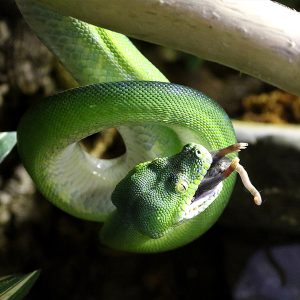Wild, Weird & Creepy Creatures
Why do some animals give us the creeps? As Halloween season is upon us, it’s important to stop and consider. Have you ever felt a shiver down your spine at the sight of a spider lurking in a nearby corner, or watching a snake slither away through tall grass? At the Aquarium, we like to highlight some of these less beloved animals and dig into why their reputations leave a bit to be desired.
Let’s start with an easy one. Sharks have long been branded as these violent and blood-thirsty predators, seeking out both fish and human without preference. Thanks to sensationalized popular media such as ‘Jaws,’ we were fast to believe this behavior is real. This fearsome image overshadows the fact that sharks are vital gatekeepers of their oceanic ecosystems, providing balance to the underwater world. Sharks are in reality remarkable survivors, deserving at the very least our respect, and even our admiration.

Snakes are another animal often evoking terror for humans, most likely due to their serpentine bodies and fear of their hooked fangs, which are sometimes equipped with venom. As with sharks, popular media and cultural narratives have painted snakes as malevolent over the years, moving far beyond the reputation snakes deserve. The vast majority of snakes are harmless, and would much rather escape our presence than engage with us. Many species also play critical roles in their ecosystems as both predators and prey.
Before judging animals based on their physical appearance and historical narratives, it’s crucial to stop and consider the facts. Facing natural obstacles in the world along with our persecution, negative reputations have pushed some of these species to the brink of extinction.
Join us for our Wild, Weird, & Creepy virtual program on October 30 to learn about some more of these animals, and how you could potentially help out with changing the narrative!
– Educator Matt D.

